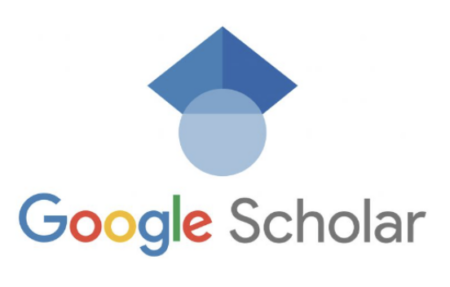Implementation Of C5.0 Classification And Support Vector Machine Algorithm With Correlation-Based Feature Selection In Application Liver Disease
Abstract
Full Text:
PDF (23-28)References
C. Yustitya Gobel, “SISTEM PAKAR PENYAKIT LIVER MENGGUNAKAN K-NEAREST NEIGHBORS ALGORITM BERBASIS WEBSITE,” 2018.
A. Siburian and C. F. Chang, “CHRONIC LIVER DISEASE LOWERING PHYSICAL AND MENTAL HEALTH DIMENSIONS,” Jurnal Keperawatan Indonesia, vol. 24, no. 3, pp. 149–156, Nov. 2021, doi: 10.7454/JKI.V24I3.1240.
S. Cheemerla and M. Balakrishnan, “Global Epidemiology of Chronic Liver Disease,” Clinical Liver Disease, vol. 17, no. 5. John Wiley and Sons Inc, pp. 365–370, May 01, 2021. doi: 10.1002/cld.1061.
E. Costello et al., “Exposure to per-and Polyfluoroalkyl Substances and Markers of Liver Injury: A Systematic Review and Meta-Analysis,” Environ Health Perspect, vol. 130, no. 4, Apr. 2022, doi: 10.1289/EHP10092.
E. Patimah et al., Klasifikasi Penyakit Liver dengan Menggunakan Metode Decision Tree. 2021.
A. Farida Muti and C. Anindya, “Analysis of Potential Drug Interactions in Liver Cirrhosis Patients,” Galenika Journal of Pharmacy) (e-Journal), vol. 7, no. 1, pp. 18–29, 2021, doi: 10.22487/j24428744.2021.v7.i1.
J. Ilmiah Matematika, S. Sofia Nurwananda, and R. Sulaiman, “MATHunesa Tahun 2022 APLIKASI HIMPUNAN FUZZY INTUISIONISTIK DALAM DIAGNOSA PENYAKIT HEPATITIS MENGGUNAKAN EXTENDED HAUSDORFF DISTANCE”.
N. Benediktus and R. S. Oetama, “Algoritma Klasifikasi Decision Tree C5.0 untuk Memprediksi Performa Akademik Siswa,” 14 ULTIMATICS, vol. XII, no. 1, 2020, [Online]. Available: https://www.kaggle.com/aljarah/xAPI-Edu-Data
P. W. Kastawan, D. M. Wiharta, and M. Sudarma, “Implementasi Algoritma C5.0 pada Penilaian Kinerja Pegawai Negeri Sipil,” Majalah Ilmiah Teknologi Elektro, vol. 17, no. 3, p. 371, Dec. 2018, doi: 10.24843/mite.2018.v17i03.p11.
D. Pramadhana, “Klasifikasi Penyakit Diabetes Menggunakan Metode CFS dan ROS dengan Algoritma J48 Berbasis Adaboost,” Edumatic: Jurnal Pendidikan Informatika, vol. 5, no. 1, pp. 89–98, Jun. 2021, doi: 10.29408/edumatic.v5i1.3336.
D. Pramadhana, “Edumatic: Jurnal Pendidikan Informatika Klasifikasi Penyakit Diabetes Menggunakan Metode CFS dan ROS dengan Algoritma J48 Berbasis Adaboost,” vol. 5, no. 1, 2021, doi: 10.29408/edumatic.v5i1.3336.
Y. Priantama, T. Azhima, and Y. Siswa, “OPTIMASI CORRELATION-BASED FEATURE SELECTION UNTUK PERBAIKAN AKURASI RANDOM FOREST CLASSIFIER DALAM PREDIKSI PERFORMA AKADEMIK MAHASISWA,” Jurnal Informatika dan Komputer), vol. 6, no. 2, pp. 251–260, 2022.
W. Widayani and H. Harliana, “Analisis Support Vector Machine Untuk Pemberian Rekomendasi Penundaan Biaya Kuliah Mahasiswa,” Jurnal Sains dan Informatika, vol. 7, no. 1, pp. 20–27, Jun. 2021, doi: 10.34128/jsi.v7i1.268.
N. Benediktus and R. S. Oetama, “Algoritma Klasifikasi Decision Tree C5.0 untuk Memprediksi Performa Akademik Siswa,” 14 ULTIMATICS, vol. XII, no. 1, 2020, [Online]. Available: https://www.kaggle.com/aljarah/xAPI-Edu-Data
R. N. Amalda, N. Millah, and I. Fitria, “IMPLEMENTASI ALGORITMA C5.0 DALAM MENGANALISA KELAYAKAN PENERIMA KERINGANAN UKT MAHASISWA ITK,” Teorema: Teori dan Riset Matematika, vol. 7, no. 1, p. 101, Mar. 2022, doi: 10.25157/teorema.v7i1.6692.
W. Hidayat, M. Ardiansyah, and A. Setyanto, “Pengaruh Algoritma ADASYN dan SMOTE terhadap Performa Support Vector Machine pada Ketidakseimbangan Dataset Airbnb,” Edumatic: Jurnal Pendidikan Informatika, vol. 5, no. 1, pp. 11–20, Jun. 2021, doi: 10.29408/edumatic.v5i1.3125.
M. Khubaib Tamami and I. Kharisudin, “Indonesian Journal of Mathematics and Natural Sciences Komparasi Metode Support Vector Machine dan Naive Bayes Classifier untuk Pemodelan Kualitas Pengajuan Kredit.” [Online]. Available: http://journal.unnes.ac.id/nju/index.php/JM
I. A. Muis and M. Affandes, “Penerapan Metode Support Vector Machine (SVM) Menggunakan Kernel Radial Basis Function (RBF) Pada Klasifikasi Tweet,” Jurnal Sains, Teknologi dan Industri, vol. 12, no. 2, pp. 189–197, 2015, [Online]. Available: http://ejournal.uin-suska.ac.id/index.php/sitekin
R. Indraswari and A. Z. Arifin, “RBF KERNEL OPTIMIZATION METHOD WITH PARTICLE SWARM OPTIMIZATION ON SVM USING THE ANALYSIS OF INPUT DATA’S MOVEMENT,” Jurnal Ilmu Komputer dan Informasi, vol. 10, no. 1, p. 36, Feb. 2017, doi: 10.21609/jiki.v10i1.410.
J. Mase, M. T. Furqon, and B. Rahayudi, “Penerapan Algoritme Support Vector Machine (SVM) Pada Pengklasifikasian Penyakit Kucing,” 2018. [Online]. Available: http://j-ptiik.ub.ac.id
T. Meisya, P. Aulia, N. Arifin, and R. Mayasari, “PERBANDINGAN KERNEL SUPPORT VECTOR MACHINE (SVM) DALAM PENERAPAN ANALISIS SENTIMEN VAKSINISASI COVID-19”, [Online]. Available: https://doi.org/10.31598
S. Widodo, H. Brawijaya, and S. Samudi, “Stratified K-fold cross validation optimization on machine learning for prediction,” Sinkron, vol. 7, no. 4, pp. 2407–2414, Oct. 2022, doi: 10.33395/sinkron.v7i4.11792.
I. Widhi Saputro and B. Wulan Sari, “Uji Performa Algoritma Naïve Bayes untuk Prediksi Masa Studi Mahasiswa Naïve Bayes Algorithm Performance Test for Student Study Prediction,” Citec Journal, vol. 6, no. 1, 2019.
W. Steven Dharmawan et al., “Penerapan Metode SDLC Waterfall Dalam Perancangan Sistem Informasi Administrasi Keuangan Berbasis Desktop,” vol. VI, no. 2, 2018.
M. Diah Larasati and I. Satriadi, “Model Waterfall Untuk Pengembangan Sistem Informasi Pengolahan Nilai Pada SMP Kartika XI-3 Jakarta Timur”, doi: 10.31294/jtk.v4i2.
D. B. Setyohadi and F. A. Kristiawan, “PREPROCESSING ITERATIVE PARTITIONING FILTER ALGORITHM,” 2017.
R. P. Padang, “IMPLEMENTASI DATA MINING ALGORITMA C5.0 DALAM MEMPREDIKSI PENERIMAAN CLEANING SERVICE (CS) PADA PT ISS INDONESIA MEDAN,” 2019.
D. Normawati and S. A. Prayogi, “Implementasi Naïve Bayes Classifier Dan Confusion Matrix Pada Analisis Sentimen Berbasis Teks Pada Twitter,” 2021.
J. A. Firdaus, A. Setia Budi, and E. Setiawan, “ANALISIS PERFORMA ALGORITMA MACHINE LEARNING PADA PERANGKAT EMBEDDED ATMEGA328P,” vol. 10, no. 2, pp. 245–254, 2023, doi: 10.25126/jtiik.2023106196.
R. N. Amalda, N. Millah, and I. Fitria, “IMPLEMENTASI ALGORITMA C5.0 DALAM MENGANALISA KELAYAKAN PENERIMA KERINGANAN UKT MAHASISWA ITK,” Teorema: Teori dan Riset Matematika, vol. 7, no. 1, p. 101, Mar. 2022, doi: 10.25157/teorema.v7i1.6692.
DOI: https://doi.org/10.37058/jaisi.v2i1.10848
Refbacks
- There are currently no refbacks.
International Journal of Applied Information Systems and Informatics (JAISI)
Department of Information Systems, Faculty of Engineering, Siliwangi University Tasikmalaya
email: jaisi@unsil.ac.id
Jalan Siliwangi No. 24 Kelurahan Kahuripan Kecamatan Tawang Kota Tasikmalaya 46115

This work is licenced under a Creative Commons Attribution 4.0 International Licence






